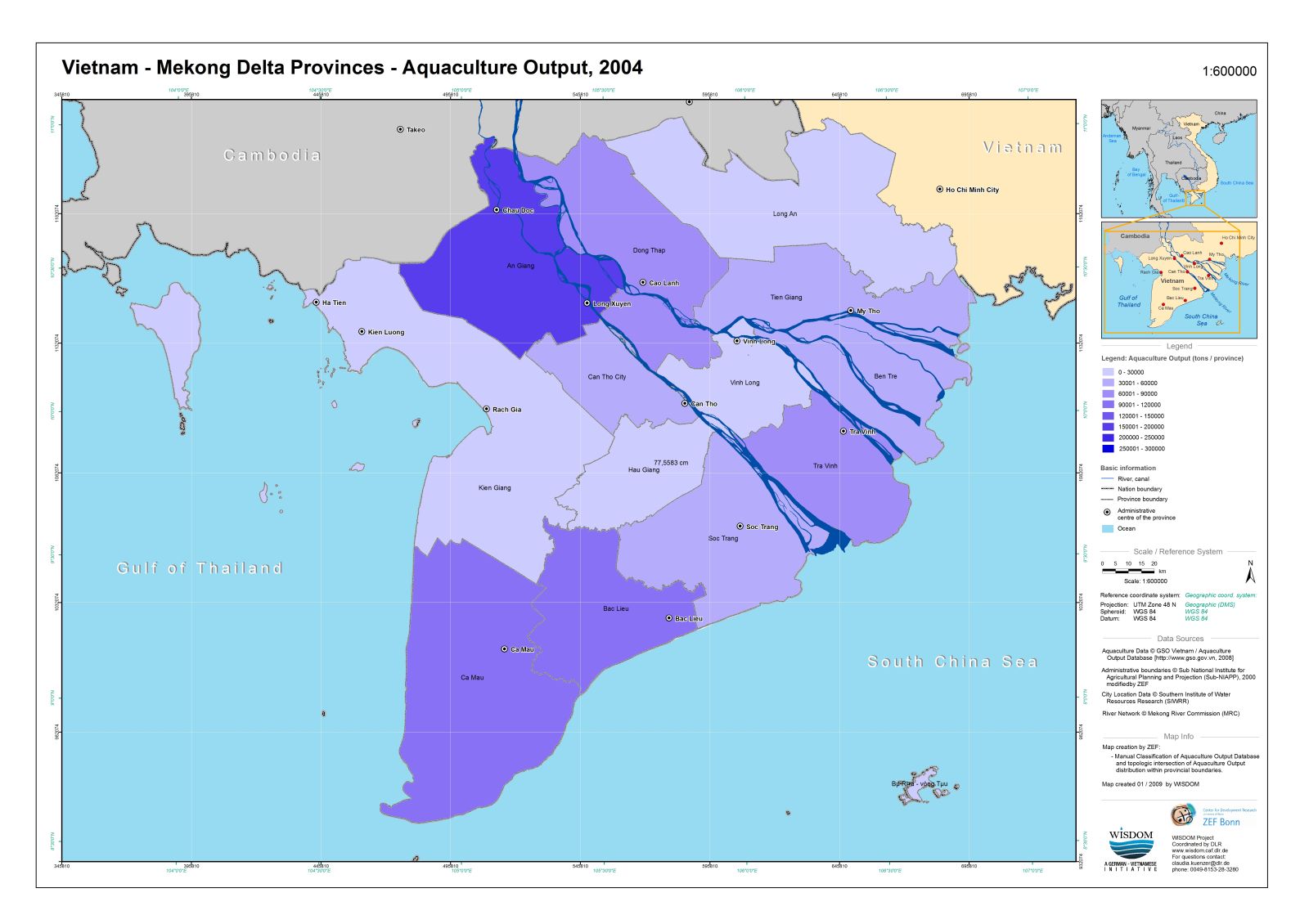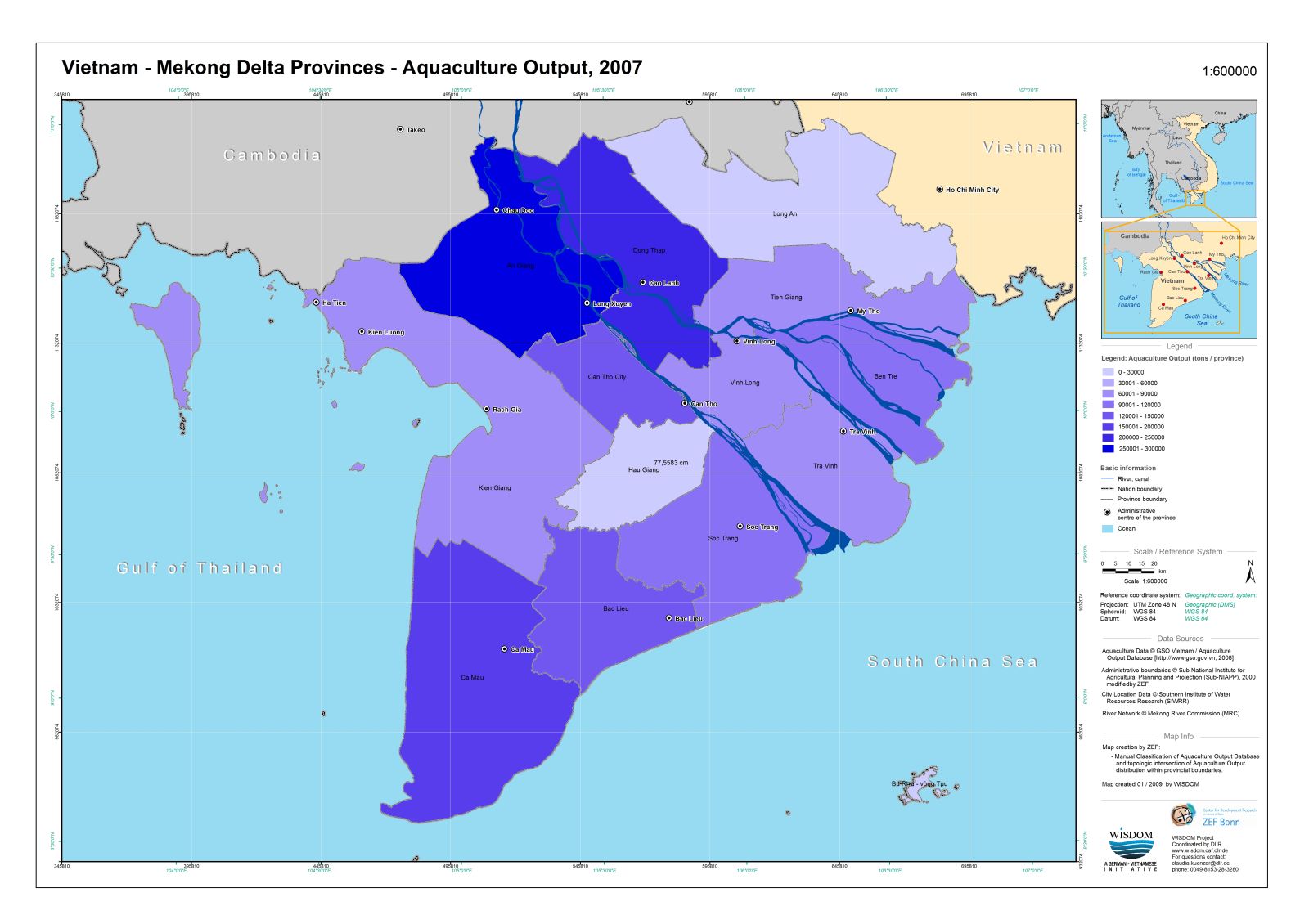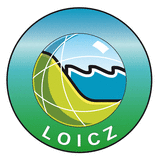Mekong Delta – Aquaculture Output, 2004 & 2007
By the end of the 1990s, the government’s policy of agricultural development of the Mekong Delta shifted from mono-cultural rice production to more diversified policies of agrarian development, including a strong focus on aquaculture. Since then, aquaculture has experienced a considerable boom that came along with strong growth rates in many provinces of the delta. In 2007, the Mekong Delta produced about 1.5 million tones of aquatic products, mainly shrimps and catfish grown in farms, which is 72 percent of the national output of aquaculture. Compared to 2004, the annual output of aquaculture doubled by 2007 within only 3 years (total output in 2004: 770 000 tones / total output in 2007: 1 500 000 tones).

Figure 1: Mekong Delta – Aquaculture Output, 2004. Scale: 1:600.000

Figure 2: Mekong Delta – Aquaculture Output, 2007. Scale: 1:600.000
GIS: Reference coordination system: Projection UTM 48 N; Datum WGS 84
The maps illustrate the annual output from aquaculture at the province level within the Mekong Delta.
The most important map attributes such as class values and reference scale are tabulated in the map frame.
Shrimp farming is mainly done in the coastal areas located downstream, where mangrove forests and brackish water provide favorable conditions for intensive shrimp farming. In 2007, the Mekong Delta produced about 315 thousand tones of shrimps, 81 percent of Vietnam’s entire shrimp output. Nowadays, the center of the delta´s shrimp farming is located in the coastal provinces of Ca Mau, Bac Lieu, Soc Trang and Tra Vinh, where the lion share of the delta’s shrimps comes from.
For catfish farming abundance of freshwater is an important production resource. Centers of catfish farming therefore are located upstream in the flood prone areas of the delta, encompassing the provinces of An Giang, Dong Thap and Can Tho as major production hubs. In 2007, 1.1 million fish were farmed in the delta, accounting for 73 percent of national output.




